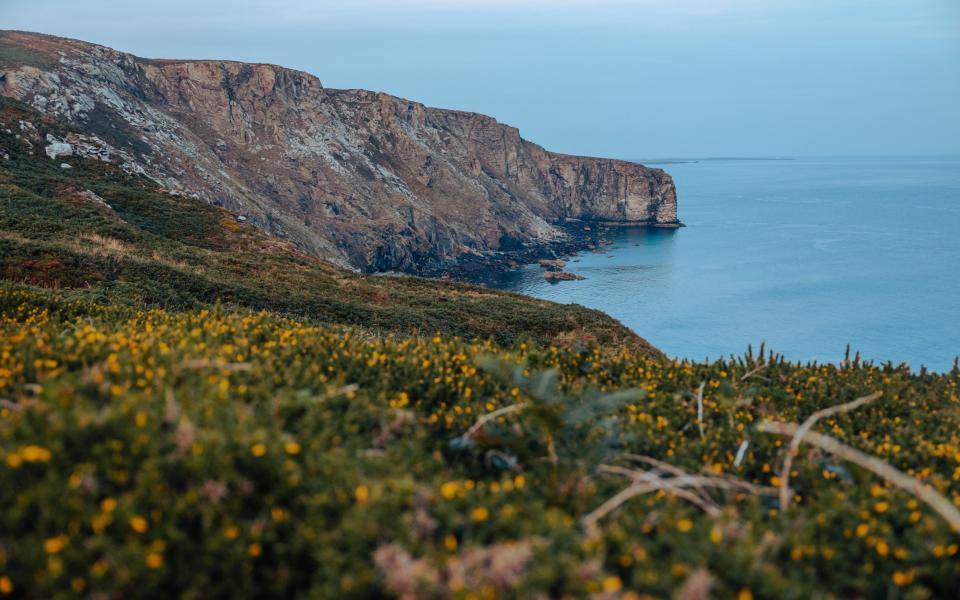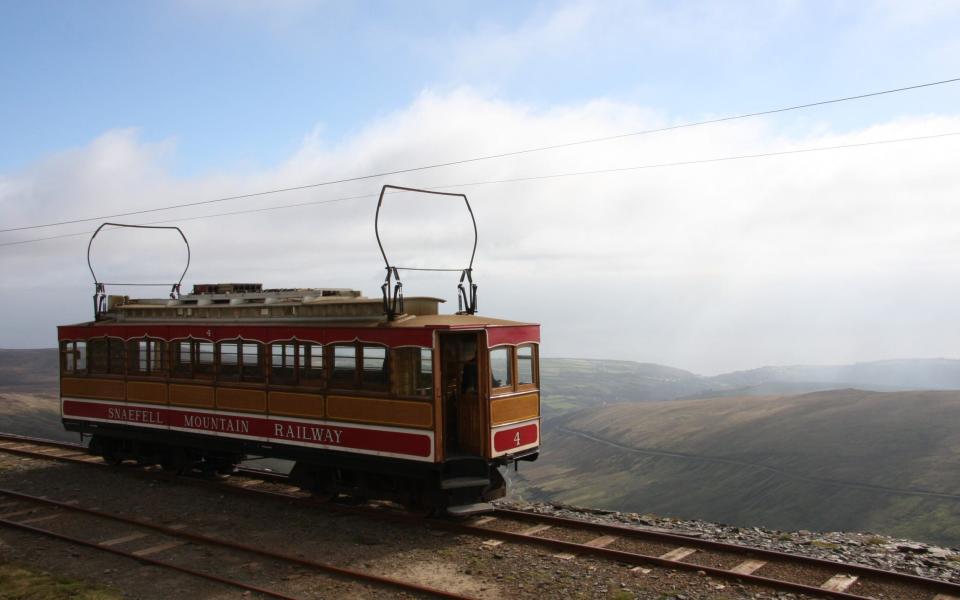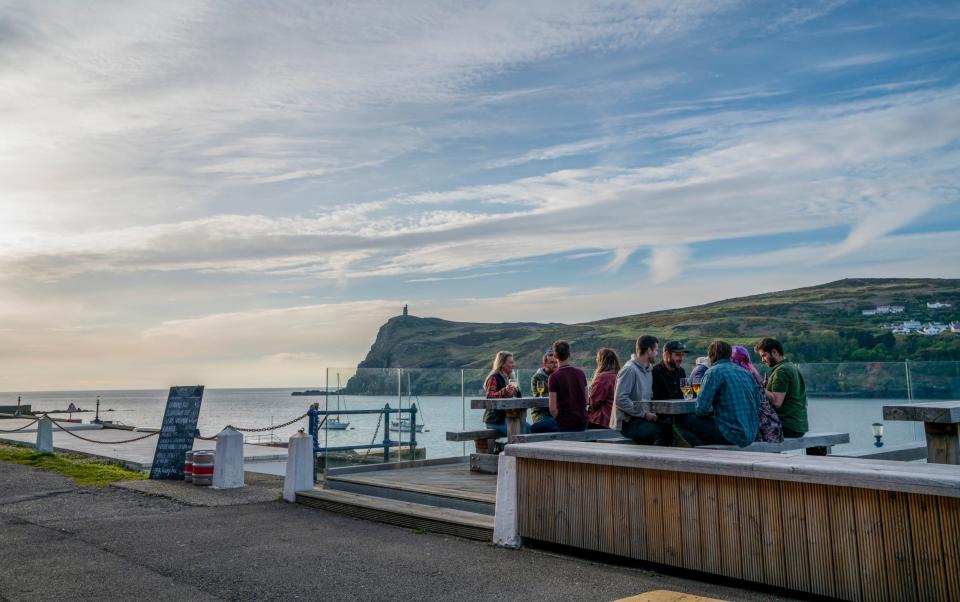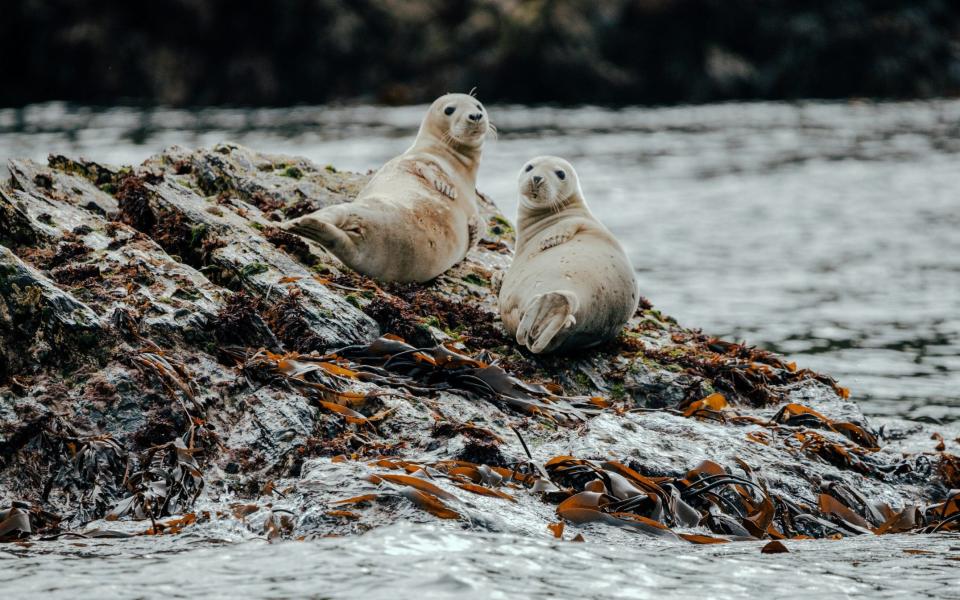Train travel in mainland Britain is put to shame by the Isle of Man’s historic railways.
It’s 10am and right on schedule my train pulls out of Port Erin station, announcing its departure with a cheerful whistle. Clouds of smoke billow past the window as we walk faster, adding to the magic of the landscape outside: all the meadows, hedgerows and patches of woodland bright with purple foxglove. It’s a landscape that can hardly have changed in the century and a half since trains first made their way through the Manx countryside.
Steam trains arrived on the Isle of Man in 1873, first between Douglas and Peel and then, a year later, on the Port Erin line. In the 1920s and 1930s, around a hundred trains a day ran along four routes to stations, carrying more than a million passengers annually; but in 1968 only the Port Erin line survived.

It is still served by the original rolling stock that I travel with today, with brightly colored locomotives pulling wood-paneled wagons whose red and orange upholstery references the flames that power the engine.
Together with electric trains and horse-drawn trams, these heritage services form a large part of the Isle of Man’s visitor appeal. Their sense of romance perfectly matches the appeal of stepping back in time to a place that moves at a gentler rhythm than Britain (of which it is a crown dependency rather than a part).
With up to six daily round trips, the steam trains lend themselves to both sightseeing and point-to-point travel. Half an hour after leaving Port Erin, I disembark at Castletown to poke around the medieval castle, then hop on the next train to continue to Douglas, the capital, with glimpses of the sea contributing along the way. to the landscape.


From Douglas’s red-brick station it’s a pleasant two-mile walk along the promenade to reach the terminus of the electric railway, passing seafront hotels built to welcome Victorian-era holidaymakers.
The vintage electric railway, opened in 1893, meanders north towards Ramsey through the forested valleys of the east coast. Halfway at Laxey I get off to connect to the mountain railway. As it clicks away from the village, we get a good look at Lady Isabella, the world’s largest working water wheel, before climbing up through moors grazed by herds of hardy sheep.
However, as you approach the summit, clouds descend over the view. By the time we cross Mountain Road (where motorbikes scream past at 200mph during the Isle of Man’s signature TT races), visibility is just a few metres. Too bad, says the conductor, because on a clear day you can see England, Scotland, Ireland and Wales in one go.


“We call it Manannan’s Cloak,” he reveals, referring to stories of a sea god who summoned mists to protect the island from invaders. “It is said that this is why the Romans never conquered the island – but that is less welcome these days when the fog closes the airport!”
I wake up the next morning to find that Manannan has shrouded the island, but cloudy skies are no obstacle to exploring the island by bike. Although the original Douglas-Peel railway line is no longer in use, the route has been converted into an 11-mile cycle path.
Thanks to the Victorian engineers who built this route along river valleys – the Dhoo, which flows towards Douglas Bay, and the Neb for the western divide – this route is very easy to ride with no elevation changes over islands. With a rented e-bike I cycle along roadsides full of wild flowers, via level crossings and platforms where no train has run for more than 50 years.


The fog lifts towards the end of the afternoon, making the next day ideal for walks along the coast. From the port of Port Erin I pick up Raad ny Foillan: the 140 kilometer long coastal path that encircles the island. I follow it over cliffs colorful with grasses and bright green ferns, interspersed with patches of heather that add purple to the palette. A strong breeze kicks up whitecapped waves, hampering attempts to spot marine life. Seagulls, however, enjoy the updraft and are my constant companions, occasionally joined by jet-black ravens and their much rarer cousins, jackdaws, which flutter past on ragged wings.
As I reach the bottom of the island I find much more sheltered conditions, which bodes well for my lunchtime kayaking trip. At The Sound Café I have coffee with kayaking guide Andy North, who points out the sad song of the seals floating off the island of Calf of Man. “I brought a whistle, so we’ll play them a song and see if they sing back,” he says as we put on life jackets and paddle into the canal.


What follows is simply magical. Intrigued by Andy’s soft music, the curious seals gather around them, diving with dramatic splashes before emerging with a huff. As I look down through the clear-bottomed kayak, I see one below me, blowing silvery bubbles through its nose and then trying to catch them between its teeth as, trapped against the vessel, they move around like liquid mercury. And all the while, the seals still lying on the rocks seem to be singing in response to Andy’s whistle.
Our plan was to discover lonely sea caves and secret beaches, but the seals prove too compelling. When they have had enough of us and return to their haul, we paddle on to the Calf of Man and take a barefoot walk, enjoying the feeling of cool grass and sun-warmed pebbles underfoot. I feel very much in the moment, which Andy says is no surprise. “Time spent in nature is good for the soul,” he says. “It really recharges our batteries.”
The interaction makes me hungry for more animal encounters, so for my last day on the island I book a wildlife-themed coastal cruise. According to the brochure, we can encounter everything from porpoises and puffins to basking sharks. But will our happiness be within? Like many other things in the Isle of Man, that will probably have something to do with Manannan.